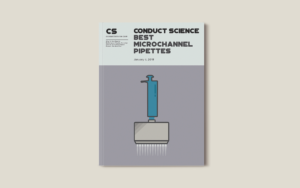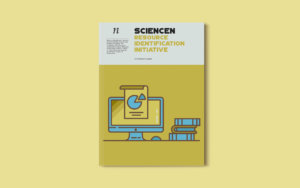
Best Microchannel Pipettes: A Comprehensive Guide
Introduction Pipetting, at first glance, would seem a fairly simple and easy task. Essentially described as glass or plastic tubes used to measure and transfer

Biomedical Science is a branch of medicine that involves studying living things and finding disease cures. It is a delicate study of the stages of living organisms from the atomic to the population level. Thus, it is a process of evolution that needs an attentive eye to observe it.
Biomedical science is a booming research field. Over the last 20 years, the U.S. has spent more than $385 billion on biomedical research. The National Institute of Health (NIH), under the aegis of the U.S. government, sustains research and development.
Last year, the U.S. federal government provided the NIH with $37 billion solely for biomedical research funding. This aided about 1,287 early-stage investigators through Next Generation Program introduced by the NIH. The goal of this program was to provide research funds to at least 1,100 young investigators. It achieved more than its expected goals and, thus, was a huge success.
The NIH has been allotted a total of $39.308 billion for the current fiscal year 2019. Hopefully, it will bring about much better results in terms of biomedical research.
Recently, the U.S. federal government announced the next year’s budget of about $34 billion. The cut in the budget is expected to impact the biomedical research progress negatively.
Biomedical research is the backbone of the U.S. economy. The money that the government invests in the biomedical research field multiplies with every successful innovative result arising via research. Still, it is felt that the biomedical research progress is slower than it should be. Some paramount factors responsible for this are:
A financial budget serves as an oxygen tank for the evolution of biomedical research. In the last two decades, it has been observed that the sudden budget cuts forced the NIH to accept fewer research applications. Hence, we lost many radiant and innovative ideas in this field of science.
This discourages many researchers and compels them to leave basic scientific research. Cutting $1.6 billion from the NIH’s budget threatened about 700 clinical trials and research in 2013. One clinical trial can serve as a life-saver for many lives, and stopping it means sucking lives out of them. (Wafik, 2013)
The grant application criteria system of the NIH has changed a lot in the past few years. Inadequate finance has decreased risk-based research. It now prefers those research applications which assure success. New ideas that lack evidence of success are usually rejected by today’s peer review system. This has brought the biomedical research progression to the point of limitation. The NIH should know that risky ideas are usually the ones that sprout results that are unthinkably brilliant.
Competition in biomedical science is very healthy for the propagation of novel ideas and results (Bruce, Marc, Shirley & Harold, 2014). It was considered good until hyper-competition among the applicants for the sake of research funding overpowered the actual cause of research. Investigators nowadays concentrate more on how to write an application rather than on their research.
Peer reviewers are a group of scientists that rate the submitted grant applications according to the criteria set by the NIH. This process is delicate and requires experienced scientists to point out the worthiness of the applications. For the past few years, senior scientists have not been too much a part of the peer-reviewing system. The reason behind it is that they feel dejected when they have to reject so many innovative applications due to tight criteria.
Secondly, senior scientists are largely replaced by professional editors in the peer-reviewing process. This is creating potential biases. These editors prefer those researches that can bring fame in the newspapers rather than the quality of work. Also, they focus more on how well-written the grant application is.
The majority of the researchers are compelled to focus largely on the format and skills of grant writing. The peer reviewer system has got it imprinted on their minds that if the application does not fit the writing criteria, it will be rejected. This has caused the investigators to lose too much of their time and effort in the grant application writing process.
The success rate of application acceptance has decreased considerably, from 31% to 20.2% in the last sixteen years. Half of the researcher’s time gets wasted on writing their applications, which is alarming. (Ronald, 2015)
A randomized control trial requires time, energy, and effort. On the contrary, a meta-analysis is much easier and takes less time and hard work. Shortage of time due to the application writing procedure has caused the rate of randomized control trials to drop substantially as compared to the meta-analysis type of research (Giovanni, 2015). Since this comparative research analysis is preferred mostly by high-impact journals, many researchers have decided to opt for this easy but negative approach.
If it continues like this, we will have much less original data to base our knowledge upon. Major discoveries sprout from the minute but genuine steps that ultimately lead to novel treatments and cures.
Researchers who have previous experience are preferred by the NIH. Both novice and experienced researchers are judged using the same criteria. This has caused young investigators to be at a great disadvantage. They feel discouraged from the start and eventually leave this field.
Too much of the money is used by the institutions on faculty salaries and indirect expenditures. Extra money is used in the recruitment of more faculty members, which is unnecessary. Even residential home costs are being paid by these funds, which is unacceptable.
The U.S. has increased restrictions on visa and immigration policies. Many researchers are facing long delays in visa issuing. This has increased problems for overseas students who get awarded grant funds. Therefore, many overseas awardees have to leave their research as it is.
A tax of 2.3% has been added on the basic medical equipment by the U.S. government. These tools are core support in providing health to the general public and for research purposes. Adding a tax on these gadgets has decreased industrial investments in them. This deficiency has directly slackened biomedical research.
The government should make clear that the public deserves the best. To do this, the government should take notice of the issues that biomedical research is facing nowadays. It’s already time to ponder over the above-mentioned paramount factors downsizing biomedical research. Hence, the changes that should be made by the government include:
The future of biomedical research in the U.S. is no doubt brilliant provided that we thoroughly follow the measures discussed above. Thanks to the years of marvelous biomedical research, we are able to live a safer life today. There is an increased need to balance the supply and demand of our researchers. All of these changes will ensure a better future for the generations to come. Henceforth, to handle the clinical obstacles, we must act on the initiatives cited above on an emergency basis. Current programs by the NIH to create a better future are:
Few efforts on behalf of the National Institute of Allergy and Infectious Diseases include:
These examples serve as the internally managed NIH strategies that are expected to be reproduced in the future with much better proficiency.

Introduction Pipetting, at first glance, would seem a fairly simple and easy task. Essentially described as glass or plastic tubes used to measure and transfer

Resource Identification Initiative: A Key to Scientific Success and Analytics The key to success can be found in the essential principles of the Resource Identification

INTRODUCTION AND BRIEF HISTORY One of the most important pieces of equipment in the laboratory is the centrifuge, which facilitates the separation of samples of

INTRODUCTION AND BRIEF HISTORY One of the most important pieces of equipment in the laboratory is the centrifuge, which facilitates the separation of samples of






DISCLAIMER: ConductScience and affiliate products are NOT designed for human consumption, testing, or clinical utilization. They are designed for pre-clinical utilization only. Customers purchasing apparatus for the purposes of scientific research or veterinary care affirm adherence to applicable regulatory bodies for the country in which their research or care is conducted.